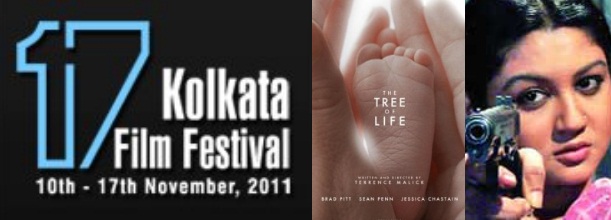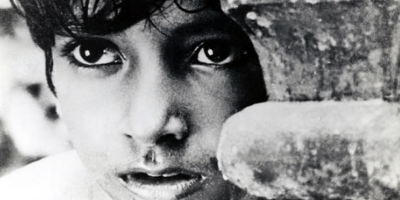The 17th International Kolkata Film Festival: 10th – 17th November 2011

In keeping with the Bengali tradition of highbrow cultural consumption and the film festival ethos of showcasing independent cinema, this year’s KFF boasted a diverse schedule; European, Taiwanese, Turkish, Iranian, Venezuelan, Bengali and Tamil cinema among those represented. While there were screenings for some recent high-profile American and British films with a limited Indian release – Cary Fukunaga’s Jane Eyre and Terrence Malick’s The Tree of Life among others – the festival also provided a fast-track introduction for the previously-uninitiated into Tollywood, the home of Bengali cinema.
For those who don’t know much about it, Bengali cinema has a strong tradition of social realism. Or, as a friend put it the other day, “In Bengali films, everyone is always miserable.” The cinematography, themes and characterizations are as far apart from the synthetic glamour of Bollywood as you might expect from two film industries based on opposite sides of a sub-continent. Those who like their films to look like Robert Doisneau photographs, look no further. Among those screened were Gautam Ghose’s Kaalbala (‘Calcutta My Love’), which follows a young man’s involvement in the pro-Maoist Naxalite movement, and Rituparno Ghosh’s Dahan (‘Thereafter’), based on a young woman’s struggle for justice after being sexually assaulted by a group of men.
The godfather of Tollywood is without question the late Satyajit Ray, whose films were influenced by 1930s and 40s European neo-realist cinema. His first film, Patha Panchali (‘Song of the Little Road’) follows the lives of members of an impoverished rural family in 1920s Bengal. The film (the first part of a trilogy) is internationally recognized as one of the most important of the twentieth century. For anyone wanting an introduction into Tollywood, this is where to start.
In and around the festival, there was much discussion of the Bolly-Holly hegemonies over the US and Europe, and India respectively. The filmmaker and critic Pratim Gupta observed that as a general rule, Bollywood is as far as the international perception of Indian cinema goes. Indian audiences, on the other hand, have access to a much wider scope of world cinema, as the eclectic list of films screened throughout the KFF reveals. A quick glance through the lists of other international film festivals proves the point further. Indian films receive little or no attention in festivals that showcase independent world cinema.
Around the time of the release of Danny Boyle’s Slumdog Millionaire, several British-Asian commentators made fairly grandiose claims along the lines of “only a Westerner could have made such an honest film about poverty in India.” On the contrary, while they may skimp on the visual shock factor, Tollywood has been making these sorts of films for years. The lack of awareness about this is, among other things, an issue of international distribution, undeniably connected to the expectation of international audiences regarding Indian cinema.
This point was made at a press conference with Swiss director Oliver Paulus, whose film Tandoori Love is a Bollywood-style “masala mix” romance “for a European audience.” According to Paulus, this is the kind of film that Europeans expect to see when they think of Indian cinema. It is the India of backpackers and luxury tours, of temples and elephants and palaces. The fact of the matter is that the all-singing, all-dancing high-budget visual whirlwinds transmitted to the West represent the reality of everyday life in India about as much as Twilight documents the everyday struggles of American teenagers.
It goes without saying that it would be impossible to discuss some kind of unilateral Indian experience. Tollywood itself has far more strings to its bow than just weepy, art-house drama. There is much discussion of the shift towards a stylistic and thematic centre from both coasts, with Bollywood “developing a social conscience” and Bengali cinema letting its hair down once in a while. While Indian audiences may be more than ready for this shift, international distributors seem harder to convince. Whatever the future of these industries and their changing influence over international cinema, KFF offers the eager film geek a welcome introduction to a very different set of mythologies.
By Lara Choksey








Recent Comments